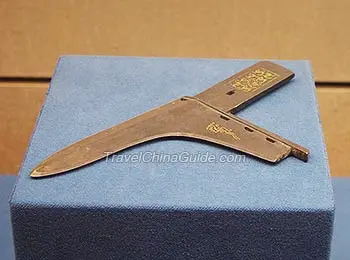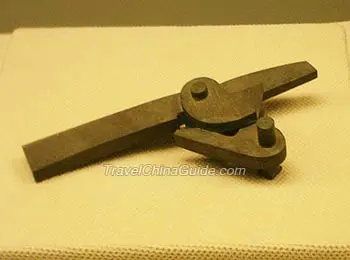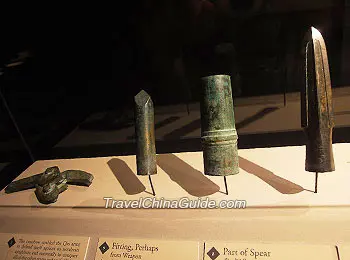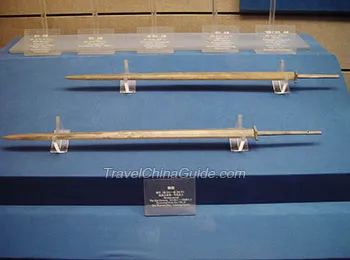Real Reasons Why Terracotta Army Weapons are Well-preserved
After being buried for more than 2,200 years, the unearthed Terracotta Army weapons are found still in good condition. In order to figure it out why these ancient swords, crossbows and spears are well-preserved, researches have examined the weapons’ chemical composition, metallurgic techniques, and surrounding environment. Below are the four likely reasons.
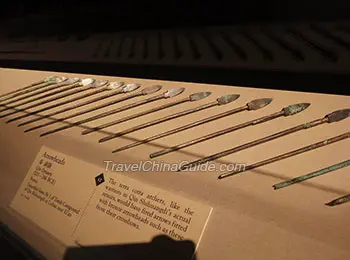 |
| Well-preserved Qin Arrow Heads |
1. High Tin Content Increased the Hardness
2. Improved Resilience through Quenching and Composite Casting Techniques
Another striking feature of bronze weapons in Terracotta Army is its composite casting technique. During the Eastern Zhou Dynasty (770BC-256BC), in order to improve both the plasticity and the hardness, the ancient craftsmen had started to combine two bronzes of different tin contents to cast weapons. Take the bronze sword in Terracotta Army as an example, the sword’s very central part is a rectangular piece made of hard bronze with more than 19 percent tin content. And this central piece is completely wrapped by the blade made of resilient bronze with tin content of 8 to 14 percent. The finished bronze sword is very stiff, sharp and not easy to fracture.
3. Alkaline Soil Prevented Erosion
In order to prove the function of yellow soil, British researchers conducted a contrast experiment. They simulated the weathering process outdoors, and placed the replicas of bronze weapons under extreme temperature and humidity. After four months, the replicas buried in British soil were severely damaged, whereas those buried in yellow soil were still in good condition.
4. Qin Craftsmen’s Unknown Anti-erosion Techniques
A Follow-up Question: Why didn’t Emperor Qin Shi Huang choose iron weapons for his Terracotta Army?
At the time, ancient craftsmen already knew how to smelt iron. And this metal material is much harder than the bronze made of tin and copper. So, why didn’t Emperor Qin Shi Huang choose iron weapons for his Terracotta Army? Two guesses are plausible. The first one is that the quenched bronze swords would present beautiful golden color. And this appearance serves a perfect foil to Emperor Qin Shi Huang’s majesty. In contrast, the iron swords fail to meet this need. The second guess believes that the quenching technique will make the bronze swords withstand erosion, thus are more suitable to be buried as funeral objects.
 See also Where are the weapons used to be in Terracotta Warriors' hands?
See also Where are the weapons used to be in Terracotta Warriors' hands?
You May Like
- Last updated on Aug. 04, 2025 by Alex Jin -
